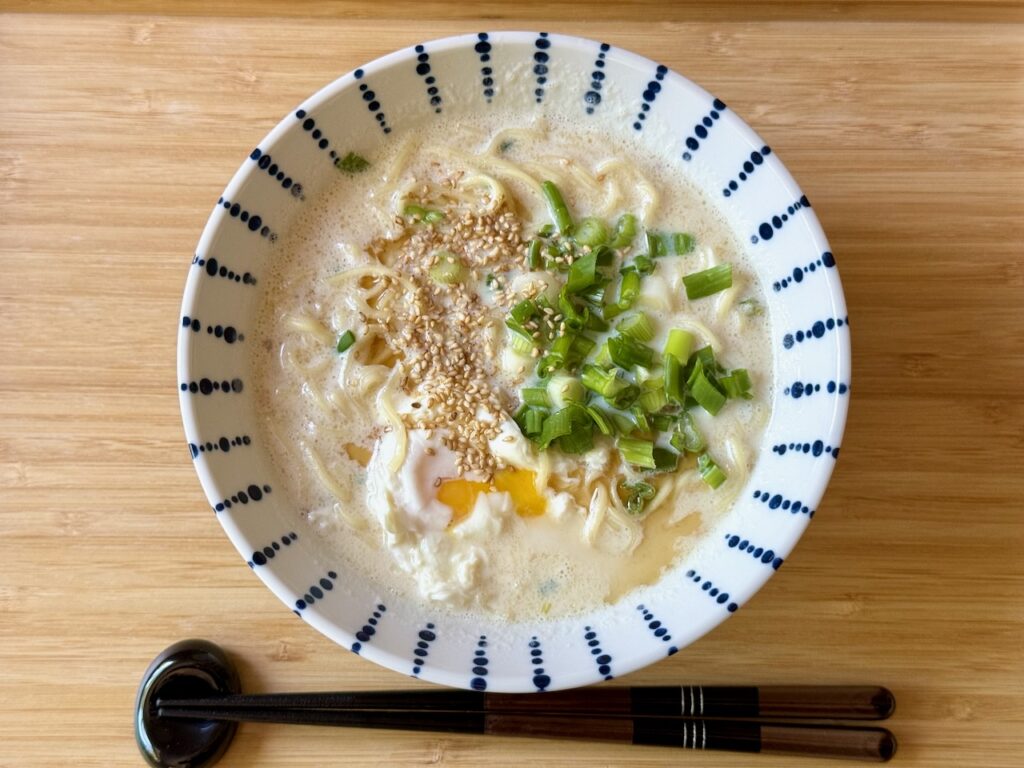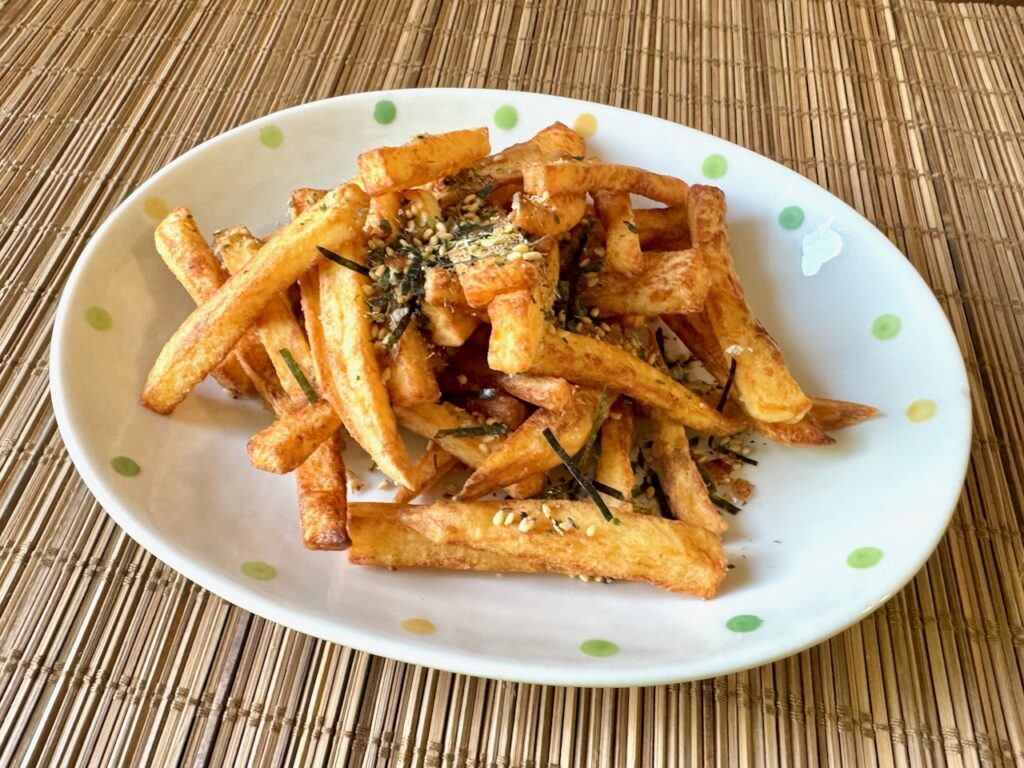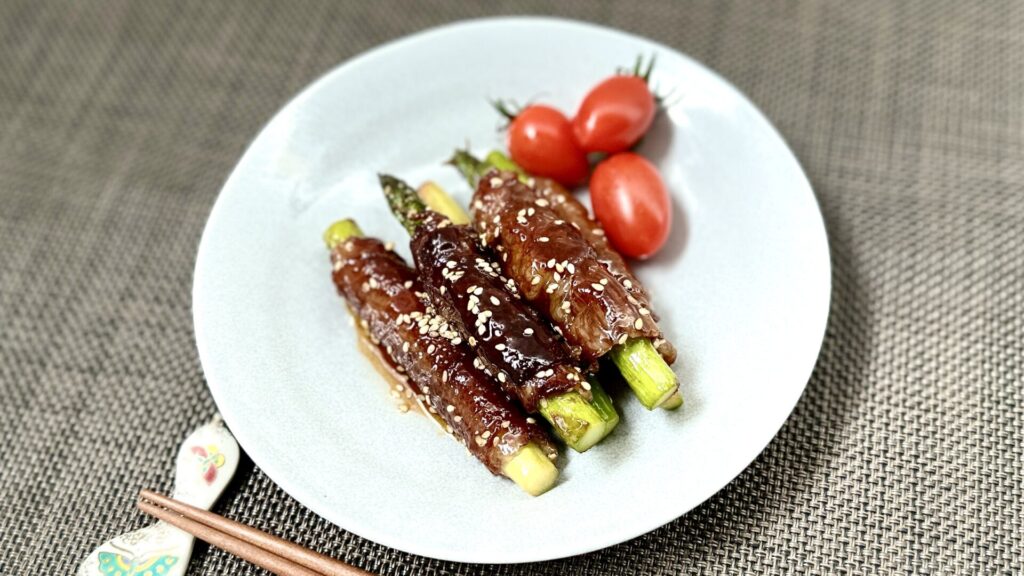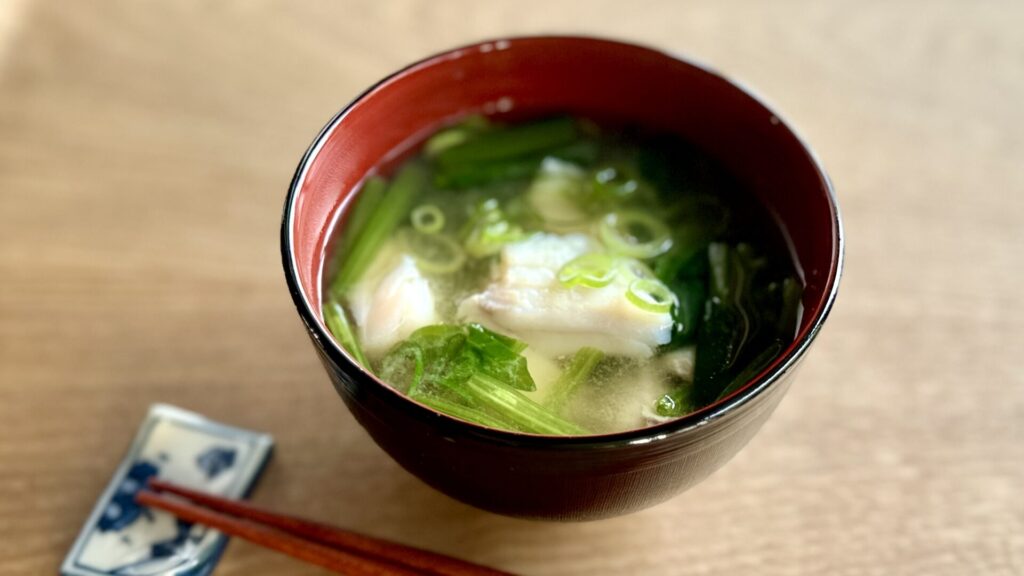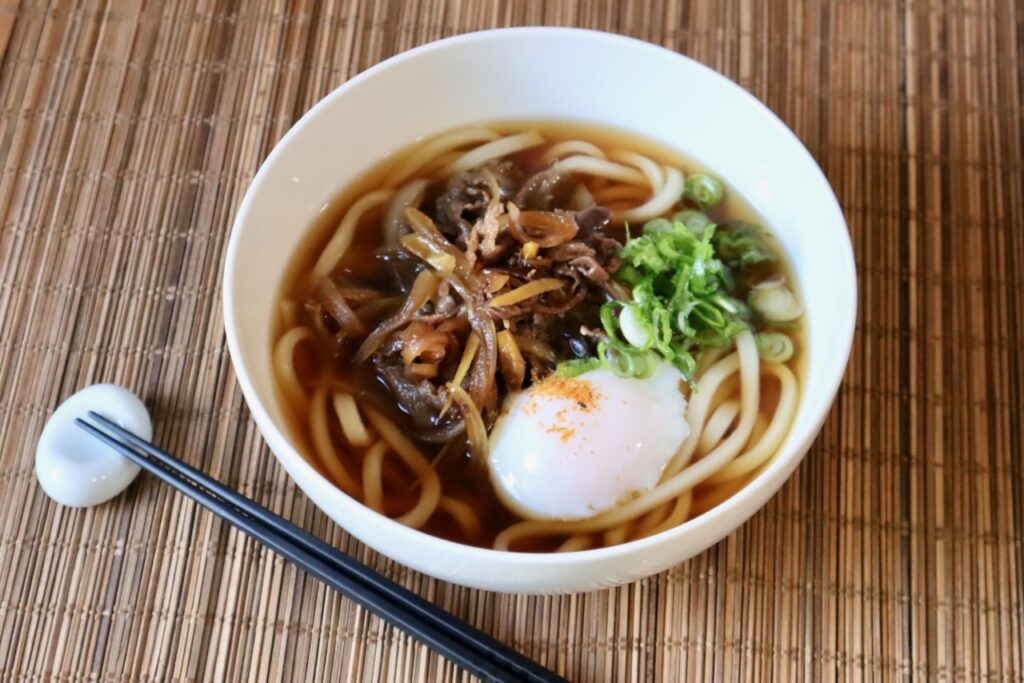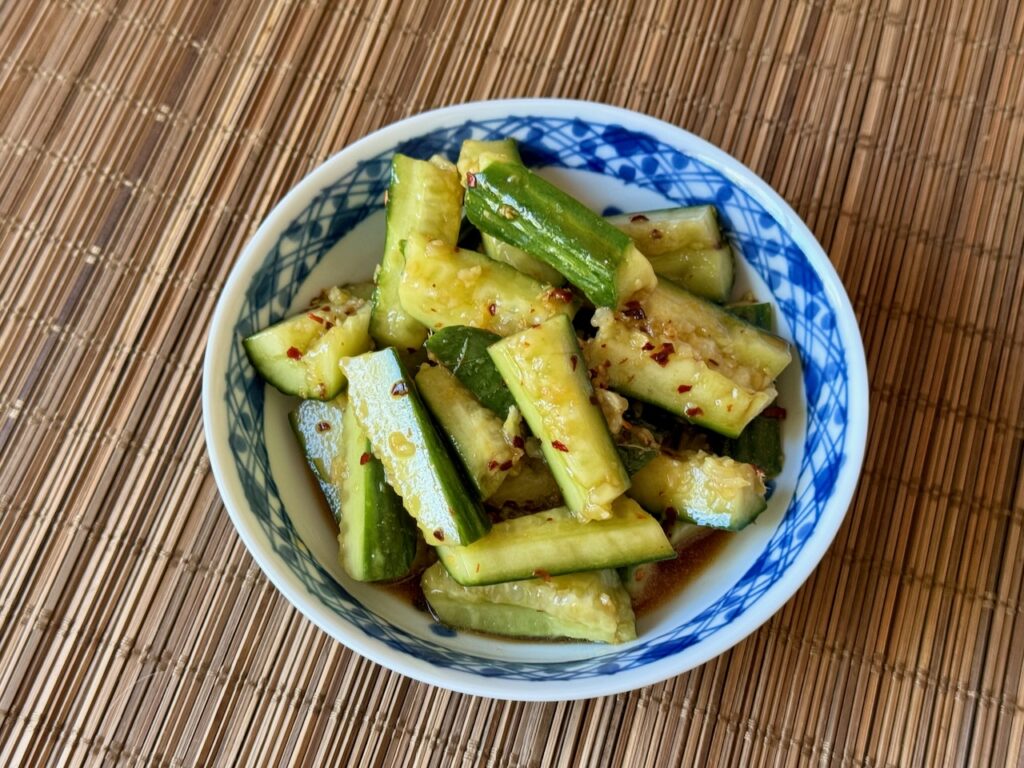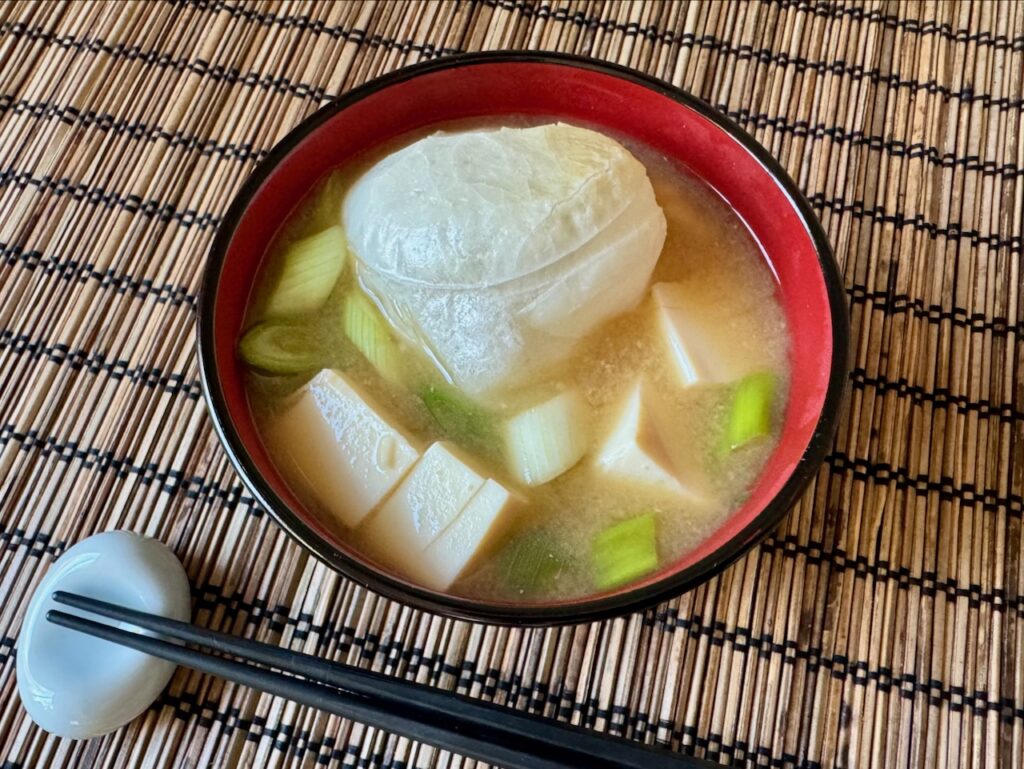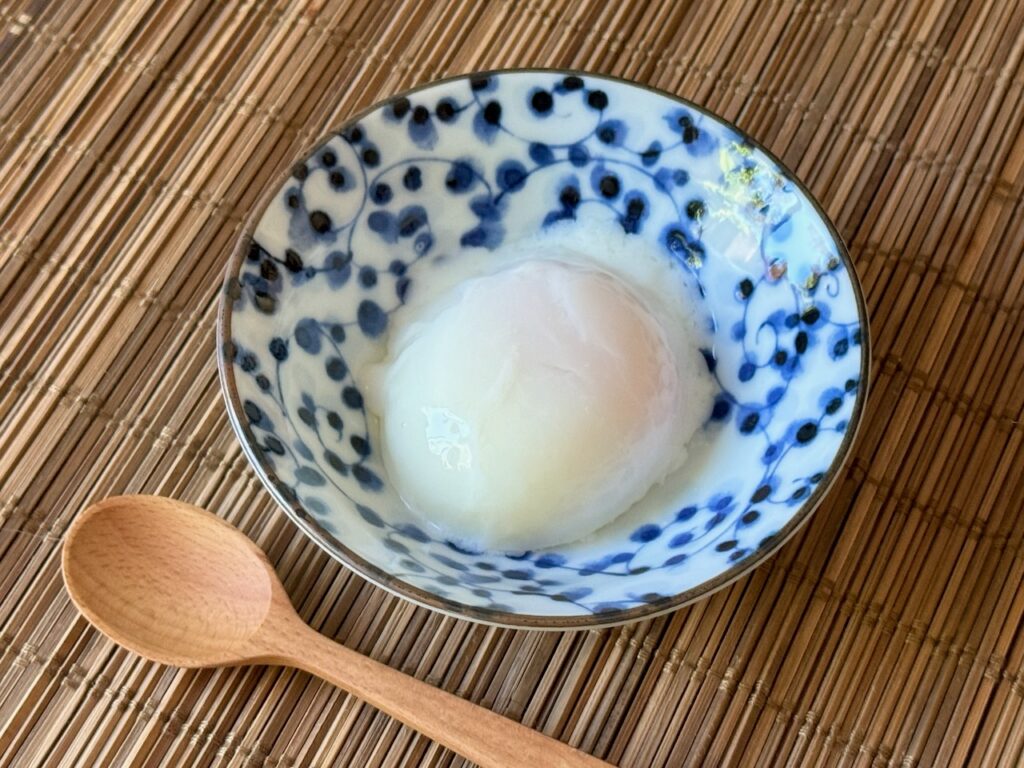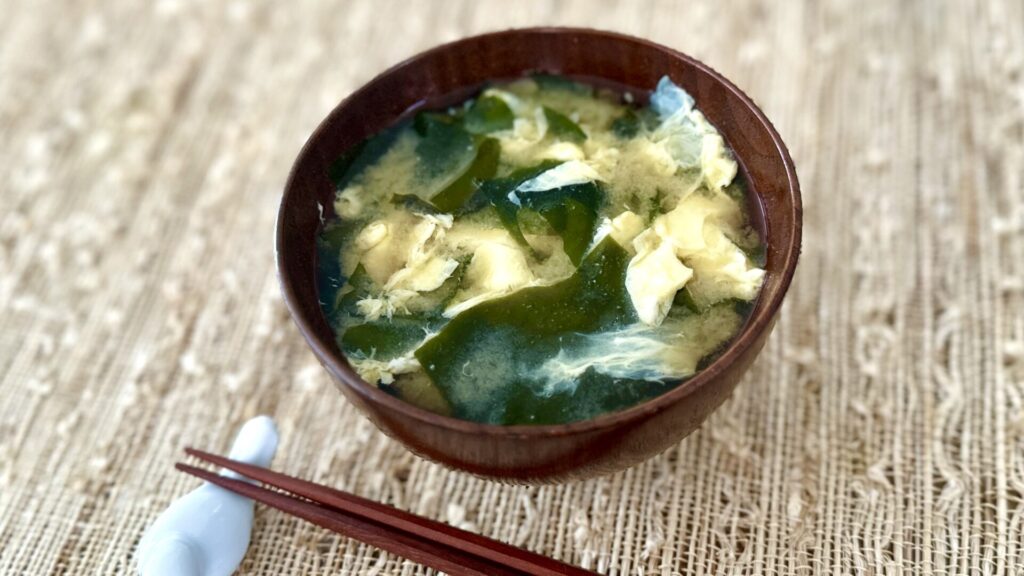Soy milk is often used for the soup of vegan ramen as it adds richness and creaminess to the broth while it’s all plant-based. In this easy (non-vegan) recipe, we simply replaced some water with soy milk when making a packaged instant ramen. No additional seasoning other than some sesame seeds and sesame oil added at the end. Soy milk added the depth in the broth, but it’s not overly creamy or greasy. It complemented the Tonkotsu flavor really well. We dropped an egg in the same pot while making the noodle, so it’s an one-pot meal and as easy as it gets!
Fried potatoes, consisting of stick potatoes fried in oil, are beloved worldwide and immensely popular in Japan. They are served not only in fast-food establishments but also in Western-style restaurants and even convenience stores. While they are commonly served as a meal component in many countries, in Japan, they are still largely considered as a snack or junk food. Nonetheless, hot fried potatoes are seriously delicious, appealing to many young and old as a guilty pleasure.
Asparagus Beef Rolls are a delightful combination of tender asparagus spears rolled with thinly sliced beef and cooked with a flavorful Teriyaki sesame sauce. This dish is incredibly versatile, serving as an easy appetizer or a satisfying main dish, made from simple ingredients. What’s more, it’s convenient; you can prepare them the night before and cook them fresh on the day you plan to serve them. This recipe is easily scalable, making it ideal for gatherings and potlucks. It’s also perfect for meal prepping Bento lunches; simply make extra for dinner and enjoy leftovers for the next day’s lunch. When cooking, be mindful not to overcook the asparagus to preserve its tender but nice crispy texture. The addition of sesame oil and seeds adds a twist to the traditional Teriyaki sauce. Alternatively, for those who prefer a more savory taste, Yakiniku BBQ sauce can be substituted. We hope you enjoy them!
Today’s miso soup features cod and spinach. Cod, known for its mild-flavored white meat that is easy to eat for many people worldwide, is just right for everyday miso soup too. By salting the fish and removing the moisture that rises to the surface before cooking, the unwanted fishy smell can be eliminated, leaving only the pleasant cod flavor in the soup. The only thing to be cautious of is that the residue of the salt may cause the soup to become too salty. Add a smaller amount of miso paste than usual initially, and gradually add more as needed to avoid making it too salty. Spinach, or any leafy green vegetables, can provide extra nutrition to the dish, resulting in a perfectly tasty and healthy miso soup that complements any meal. I hope you give it a try!
Niku Udon with Onsen Tamago is a hot Udon noodle soup topped with sweet and salty braised beef and Onsen Tamago (silky semi-cooked egg). The savory beef adds richness and depth to the rather simple Udon noodle soup, while the thick Onsen Tamago coats both the noodles and beef, bringing the flavors together well, similar to the experience of dipping Sukiyaki beef with eggs. This is a delicious dish to enjoy at restaurants and also a great meal to cook at home.
Smacked Cucumber Salad is a refreshing side dish that takes no time to prepare. Similar to the Cucumber with Sesame Seeds recipe, we smack the cucumber with a rolling pin before tossing with the dressing. In this recipe, some crushed red pepper flakes and grated ginger are added for a kick. You can adjust the spiciness to your liking. This is a quick and easy side dish to serve with any Japanese dishes.
Miso Soup with Mochi is a typical miso soup with tofu and green onions topped with a toasted mochi rice cake. It’s similar to Ozoni (a special soup for New Year), but it’s a lot more casual. Leftover dry mochi from the pantry is cooked in a toaster oven and added to the soup. You can make any miso soup recipes and just add the toasted mochi, too.
Onsen Tamago (温泉卵) is soft and silky semi-cooked eggs, and often used as a delightful topping for donburi rice bowl dishes, noodles, or simply eaten on its own with soy sauce or Mentsuyu. Typically, these eggs are made by gently heating them in warm water resembling hot springs. The eggs are placed in the water without cracking their shells and are slowly heated over time. The resulting eggs have tender whites and a gooey semi-cooked yolk. Today, onsen tamago enjoys popularity both in Japan and abroad.
Onigiri with Fried Onions is a simple treat made with store-bought fried onions seasoned with a soy sauce mixture (or Mentsuyu), mixed in rice, and shaped into triangular onigiri. Many of you may already have fried onions in your pantry from holiday use, making this a great way to recycle the ingredient. When the fried onions are flavored in the sauce, they taste almost like tempura (yum!). And, of course, they pair perfectly with steamed rice. This dish makes for an easy lunch to bring to work or a tasty after-school snack. It’s seasoned enough, but feel free to add a little salt to taste. Enjoy it as naked onigiri or wrap it with nori roasted seaweed. If you’re feeling lazy, you can simply enjoy the mixed rice as is. Hope you like it!
Today’s miso soup features Wakame seaweed and eggs. This may be our easiest and quickest miso soup yet. Wakame doesn’t need to be rehydrated; it can be added directly to the Dashi, and it will soften in the soup. Eggs add good protein and substance to this miso soup, and they’ll be cooked in no time. This is a perfect miso soup for breakfast or a busy weeknight dinner. Hope you give it a try!
